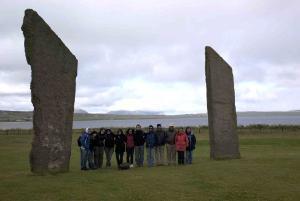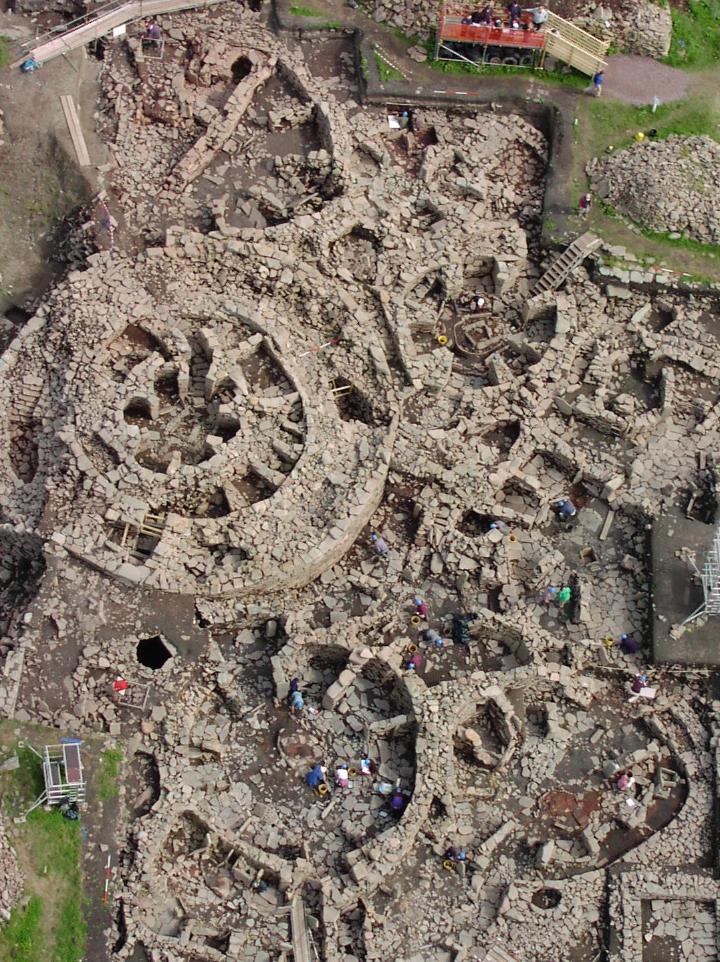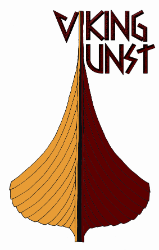North Atlantic Research (NAR) projects
Orkney Gateway to the Atlantic
Prior to the formation of NAR, work was carried out in Orkney on the island of Sanday.
The island was visited again when Steve Dockrill and Dr Julie Bond took part in a Time Team excavation at Westbrough. In 2009, the first 'Orkney Gateway to the Atlantic' North Atlantic Biocultural Organisation field school took place. The project is being run by Steve Dockrill, Julie Bond and Ingrid Mainland, in collaboration with Jane Downes and Julie Gibson from Orkney College, UHI.

This archaeological project commenced at the end of June 2009 and centred on the island of Rousay. The research project formed a new international field school for the North Atlantic Biocultural Organisation (NABO) and complements others in the Faroes, Iceland and Greenland. NABO is a non-profit making research co-operative investigating human settlement and adaptation across the North Atlantic. Researchers are from Scandinavia, the United Kingdom, Faroes, Iceland, and North America.
The project is led by Steve Dockrill and Julie Bond from Archaeological Sciences, University of Bradford and Jane Downes, Ingrid Mainland and Julie Gibson from Orkney College, UHI.
Orkney offers some of the best archaeology in Northern Europe, as shown by the stone circle at Stenness, which forms part of the World Heritage Area (Heart of Neolithic Orkney). This rich archaeological resource provides an educational background to the students’ training.
The protected archaeology in the World Heritage Area forms the tip of an archaeological iceberg, with many Orcadian sites being endangered by coastal erosion. This situation will be exacerbated further by global warming and resulting sea level change. The eroding sites have huge research potential and are able to provide important archaeological and scientific data which can inform us on how people confronted the marginality of these northern islands in the past.
The archaeological information offered by these sites can be increased with intensive landscape survey (topographical and geophysical) together with targeted test pitting and selective excavation to answer key questions. These techniques introduce the student to a wide range of skills.
The excavations at Tofts Ness were published in 2007 by The Orcadian in association with Historic Scotland, and launched, with the accompanying Pool volumne in Orkney, firstly on Sanday, and then Kirkwall.
Old Scatness Broch and Jarlshof Environs, Shetland
The present programme of investigation at Old Scatness began at Easter 1995 with integrated topographical, earth resistance and magnetic surveys. Excavation began in the summer of 1995, and, accompanied by the survey, has been reported on in a series of interim reports, a volume of papers and numerous other publications of specialist papers, as well as at conferences, day schools and evening meetings of local societies and other bodies throughout Shetland, the UK and further afield.
The Old Scatness excavation and associated survey has an integrated and multi-disciplinary research programme at its very core.
View details about each phase of the project.
The research programme may be summarised within the following themes:

Site development and chronology
The establishment of an integrated absolute chronology for Old Scatness is seen as being essential in order to provide a framework for the excavated data and to allow interpretation and understanding of questions surrounding the site’s past inhabitants, economic development and cultural identity.
Cultural change
The provision of an absolute chronology will facilitate the accurate dating of the structural and depositional sequence and allow factors such as cultural change to be viewed within a more precise chronological framework. Cultural interfaces such as that between Pictish and Viking deposits provide the opportunity to review questions of native/incomer interaction, absorption or replacement.
Economy, landscape/seascape interaction
The understanding of the economic exploitation of both the surrounding landscape for arable agriculture, animal husbandry and other economic resources (such as peat for fuel) together with the sea and seashore, is vital in understanding the site’s sustainability.
Formation of archaeological deposits & sediments
This theme is a subset of Economy, Landscape/Seascape Interaction and is also interlocked with Manufacture, Trade and Contact. An integrated research programme examining magnetic signatures, carbonised and fossilised organic components, phosphate and soil micromorphology is enabling an understanding of fuel exploitation, the identification of surfaces within structures, the formation and management of arable soils and providing evidence for deposits associated with ironworking.
Manufacture, trade and contact
Evidence for manufacture, such as copper alloy casting and ironworking, together with imported cultural material such as pottery and Roman glass, are providing evidence for both production and trade, which in turn provides further insight into the site’s status and how this might have changed over time.
Power, status and social hierarchies
The broch and defensive ditch, together with the post broch village, may be interpreted as being indicative of monumentality, control of wealth and status within a social system. Questions surrounding the accumulation or control of wealth and evidence for craft specialisation are being investigated within this theme.
Viking Unst project, Shetland
In the summer of 2005 topographical survey of several Viking/Norse house sites was carried out (Bond et al. 2006). These sites included those currently under investigation at Hamar and Underhoull, as well as Stove and Lund. Excavation associated to the Viking Unst Project commenced at Hamar in the summer of 2006.

The excavation of Viking/Norse settlements on the most northerly of the British Isles will form the centre of a much larger multi-faceted programme on 'Viking Unst' which includes historical research, place name interpretation, landscape survey, environmental history, heritage interpretation and community involvement and regeneration.
We know virtually nothing about rural Scandinavian settlement in Britain. Much of what we do know is from sites in Orkney (e.g. Pool, Skaill, Birsay, Buckquoy, Westness) and some in Shetland (Jarlshof, Underhoull, Sandwick); all of these are multi-period sites, unlike many of the apparently Viking sites in Unst.
Island of Unst
The island of Unst has a large number of longhouse sites of apparently Viking or Norse date, but these sites are rather enigmatic, seeming to consist of single phase dwellings with only a short occupation sequence.
In other parts of the Northern Isles, such single-period sites are largely absent and Viking settlement is usually identified within multi-period sites on good land with origins before Scandinavian settlement and often a long subsequent settlement history. This begs the question of why the Unst sites appear to be different. Are they perhaps the first move away from the primary settlements? If so, why were they subsequently abandoned?
Norse farms
Norse farms in these locations may have been environmentally vulnerable; soliflucation stripes and mountain-tundra soils can be seen on the Keen of Hamar, just 20m above a longhouse site. Or did the rise in the importance of fishing in the late Norse economy, as proposed by James Barratt and others, lead to the abandonment of more marginal agricultural settlements, making these late norse, rather than early Viking, farms?
Alternatively, some of these upland sites may represent not abandoned farms, but sheilings contemporary with settlements on better land which have disappeared under later farms.
View the Viking Unst project phases
Sponsors: Heritage Lottery Fund, European Regional Development Fund (ERDF)/European Agricultural Guidance and Guarantee Fund (EAGGF), Shetland Development Trust, Shetland Enterprise Company, Shetland Amenity Trust, Historic Scotland, Shetland Islands Council, University of Bradford.
Shetland
Other Shetland projects include:
- Cleviegarth Broch
- Jarlshof
- South Nesting
- Viking Unst Project
Many Shetland projects have been in collaboration with Shetland Amenity Trust.
Faroe
Members of NAR have been involved in the excavation and survey of sites on the island of Sandøy as part of the international Heart of the Atlantic Project.
During the 2009 season, rescue work at Við Kirkjugarð (the churchyard) in the village of Sandur continued.
Sponsors: Anadarko (Faroes), Leverhulme Trust (UK), National Science Foundation (USA).
